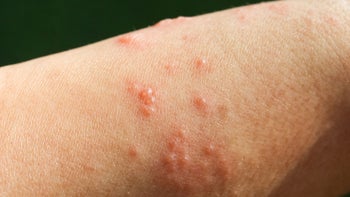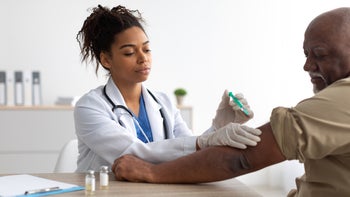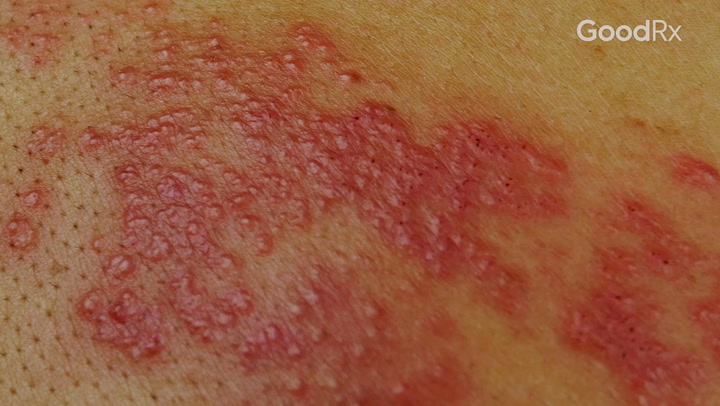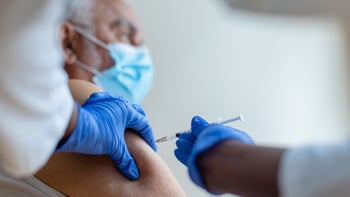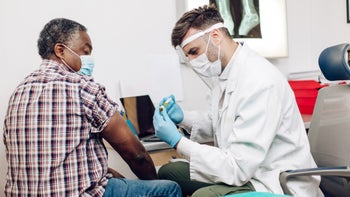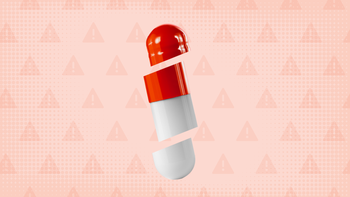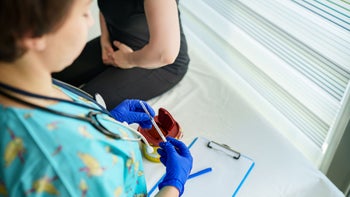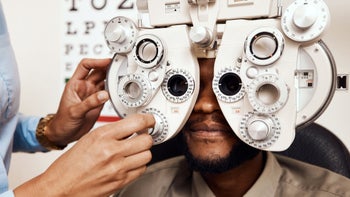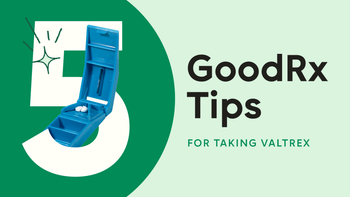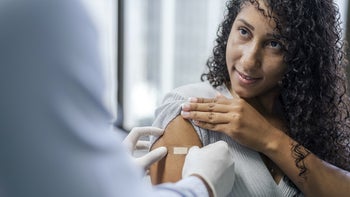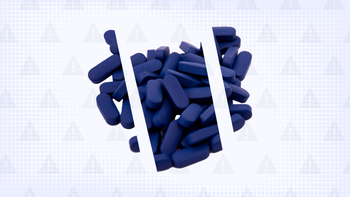
How Long Are You Contagious With Shingles?
Key takeaways:
Shingles is caused by varicella-zoster virus, the same virus that causes chickenpox. People who have shingles can’t pass the rash to others. But they can pass the varicella-zoster virus and cause someone else to get chickenpox.
People who are sick with shingles are contagious for about 7 to 10 days. That’s how long it usually takes for the fluid-filled blisters of a shingles rash to dry out.
Antiviral medications, like acyclovir and valacyclovir, shorten the amount of time you’re contagious. But you need to start these medications within 72 hours of getting a shingles rash.

Shingles (herpes zoster) is a painful rash caused by the varicella-zoster virus — the same virus that causes chickenpox. People with shingles can develop groups of painful, fluid-filled blisters anywhere on their body. But the blisters usually appear along the rib cage.
After a chickenpox illness, the varicella-zoster virus can live quietly in the body for decades. Sometimes the virus can “wake up” (reactivate), and that’s when it causes shingles.
You can’t catch shingles from another person. But you can get varicella-zoster virus, which can lead to chickenpox and possibly shingles in the future. If someone in your home has shingles, here’s what you need to know about how long shingles is contagious.
SHINGRIX (Zoster Vaccine Recombinant, Adjuvanted) is now $0 for almost everyone*
Get SHINGRIX at the pharmacy or in-network doctor’s office today. 98% of privately insured people pay $0 and all Medicare Part D beneficiaries pay $0 at the pharmacy.
Prescribing Information
*Coverage and cost may vary and are subject to change without notice. Reimbursement decisions are made by individual insurance plans.


SHINGRIX is an FDA-approved vaccine for the prevention of shingles (herpes zoster) in adults 50 years and older. SHINGRIX is not used to prevent chickenpox.
• You should not receive SHINGRIX if you are allergic to any of its ingredients or had an allergic reaction to a previous dose of SHINGRIX
• An increased risk of Guillain-Barré syndrome (severe muscle weakness) was observed after vaccination with SHINGRIX
• Fainting can happen after getting injectable vaccines, including SHINGRIX. Precautions should be taken to avoid falling and injury due to fainting
• The most common side effects are pain, redness, and swelling at the injection site, muscle pain, tiredness, headache, shivering, fever, and upset stomach
• SHINGRIX was not studied in pregnant or nursing women. Tell your healthcare provider if you are pregnant, plan to become pregnant, or are breastfeeding
• Vaccination with SHINGRIX may not protect all individuals
• Ask your healthcare provider about the risks and benefits of SHINGRIX. Only a healthcare provider can decide if SHINGRIX is right for you
You are encouraged to report vaccine adverse events to the US Department of Health and Human Services. Visit www.vaers.hhs.gov to file a report, or call 1-800-822-7967.
For US audiences.
Trademarks are property of their respective owners.
©️2024 GSK or licensor.
PMUS-SGXWCNT240015 May 2024
Produced in the USA.
GoodRx Health information and resources are reviewed by our editorial staff with medical and healthcare policy and pricing experience. See our editorial policy for more detail. We also provide access to services offered by GoodRx and our partners when we think these services might be useful to our visitors. We may receive compensation when a user decides to leverage these services, but making them available does not influence the medical content our editorial staff provides.
How long is a person with shingles contagious?
Shingles is only contagious until blisters dry out and scab over. This usually takes about 7 to 10 days. It can take weeks for the rash to completely heal. But once the blisters are crusted over, it’s no longer contagious.
Keep in mind that you may feel sick before the rash appears. Many people have symptoms for several days, such as fever, headache, and fatigue. There may be pain, tingling, or burning in the skin where the rash will develop. But none of these things are contagious.
Only the fluid-filled blisters from shingles rash carry the varicella-zoster virus. That means only those blisters are contagious. Until those blisters appear, you can’t spread varicella-zoster virus to others. And you stop being contagious once those blisters scab over.
When are people with shingles most contagious?
You’re most contagious when your shingles rash has fully formed blisters. When the shingles rash first appears, you may only notice redness, swelling, and skin bumps. These skin changes don’t contain any varicella zoster virus.
But then the rash develops into blisters. These blisters contain the varicella-zoster virus. If someone touches these blisters, they can pick up the virus. It’s also possible to pick up the virus if fluid from these blisters gets onto another person or on an object that another person uses.
Antiviral medications, like acyclovir and valacyclovir, can shorten how long a person with shingles is contagious. These medications stop new blisters from forming. They also help blisters heal faster. Instead of being contagious for 7 to 10 days, people who take antiviral medications may only be contagious for 5 to 8 days.
But in order to work, you should start the medication within 72 hours after the rash appears. So it’s important to see a healthcare provider quickly if you think you have shingles.
How do you know when shingles isn’t contagious anymore?
Once your rash has crusted over, and there are no new fluid-filled blisters, you’re no longer contagious. But keep in mind that it’s safe to be around other people if you have shingles. You just need to make sure that your rash stays completely covered at all times. If the rash is on your face and you can’t keep it covered, it’s best to stay away from people who could get sick from the varicella-zoster virus until you’re no longer contagious.
Who is at highest risk of getting shingles?
First, remember that a person with shingles can’t pass the shingles rash to another person. But they can spread varicella-zoster virus to anyone who isn’t immune to the virus. This includes:
Babies and young children who haven’t been vaccinated against chickenpox yet
Adults who never got chickenpox in childhood and weren’t vaccinated
Anyone with a weakened immune system
If these groups of people come into contact with the varicella-zoster virus, they can develop chickenpox. Although most people completely recover from chickenpox, serious complications can develop in infants, those who are pregnant, and people who have a weakened immune system.
And anyone who develops chickenpox is at risk for developing shingles later in life.
How is shingles transmitted?
To get varicella-zoster virus from a person with shingles, your skin has to come in direct contact with fluid from the blistering shingles rash. As long as a person with shingles keeps their rash covered, they can’t transmit varicella-zoster virus.
In rare cases, a person with shingles can spread varicella-zoster more easily — through respiratory droplets or the air. This only happens in disseminated shingles, a severe form of shingles.
Disseminated shingles cause a much more widespread rash that looks similar to chickenpox. People with weakened immune systems are at higher risk for developing disseminated shingles.
How can you prevent the spread of shingles?
The best way to prevent spreading shingles is to avoid getting it in the first place. Shingrix is a highly effective vaccine that’s recommended for everyone 50 years old and older. It’s a 2-dose series that is more than 90% effective at preventing shingles.
If you have shingles, you can take steps to protect other people from coming in contact with the varicella-zoster virus:
Keep your rash covered. Varicella-zoster virus lives in the fluid inside the shingles blisters. So you can prevent spreading it by making sure people don’t accidentally touch the blisters. If you can’t cover the rash, make sure to stay away from anyone who is at higher risk of getting varicella-zoster until your rash heals.
Talk with your provider about starting an antiviral medication. You can shorten how long you’re contagious by starting an antiviral medication within 72 hours after the rash appears.
Stay away from people at high risk of illness from varicella zoster. People at higher risk for severe varicella-zoster illness include pregnant women, babies and young children, older adults, people with compromised immune systems, and people who have never had chickenpox or the chickenpox vaccine.
The bottom line
People with shingles are contagious for as long as they have a rash with fluid-filled blisters. This is usually around 7 to 10 days. Antiviral medications can help the rash heal and shorten how long a person with shingles is contagious. If you have shingles, you can prevent spreading varicella-zoster virus by keeping the rash covered until it crusts over.
Why trust our experts?


References
American Academy of Dermatology Association. (2019). Shingles: Overview.
Centers for Disease Control and Prevention. (2022). What everyone should know about the shingles vaccine (Shingrix).
Centers for Disease Control and Prevention. (2021). Chickenpox (varicella).
Centers for Disease Control and Prevention. (2020). Shingles (herpes zoster).
Gnann Jr., J. W. (2007). Chapter 65, antiviral therapy of varicella-zoster virus infections. StatPearls.
Minnesota Department of Health. (2022). Managing herpes zoster (shingles) exposures in health care settings.
National Institute on Aging. (2021). Shingles.
Saguil, A., et al. (2017). Herpes zoster and postherpetic neuralgia: Prevention and management. American Family Physician.




